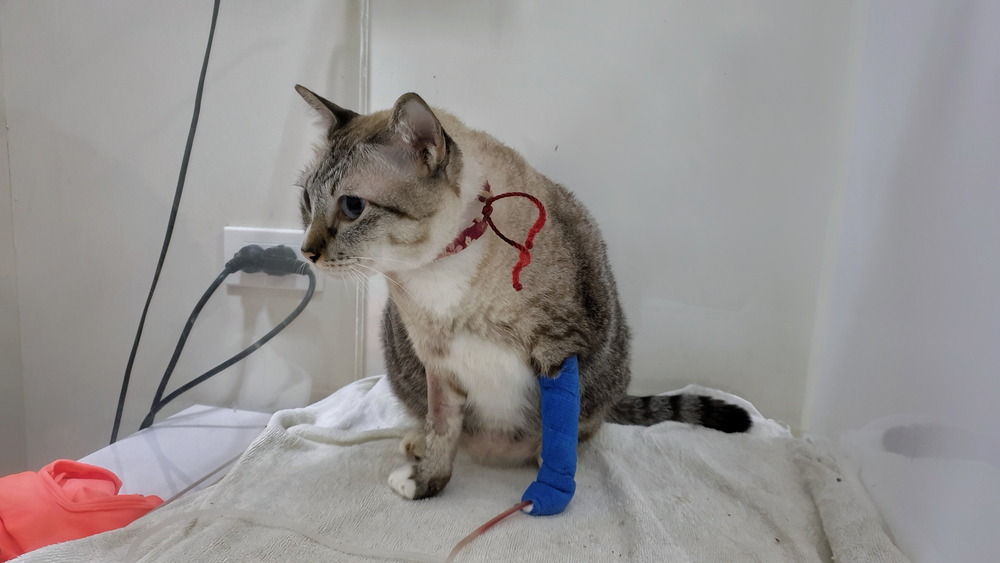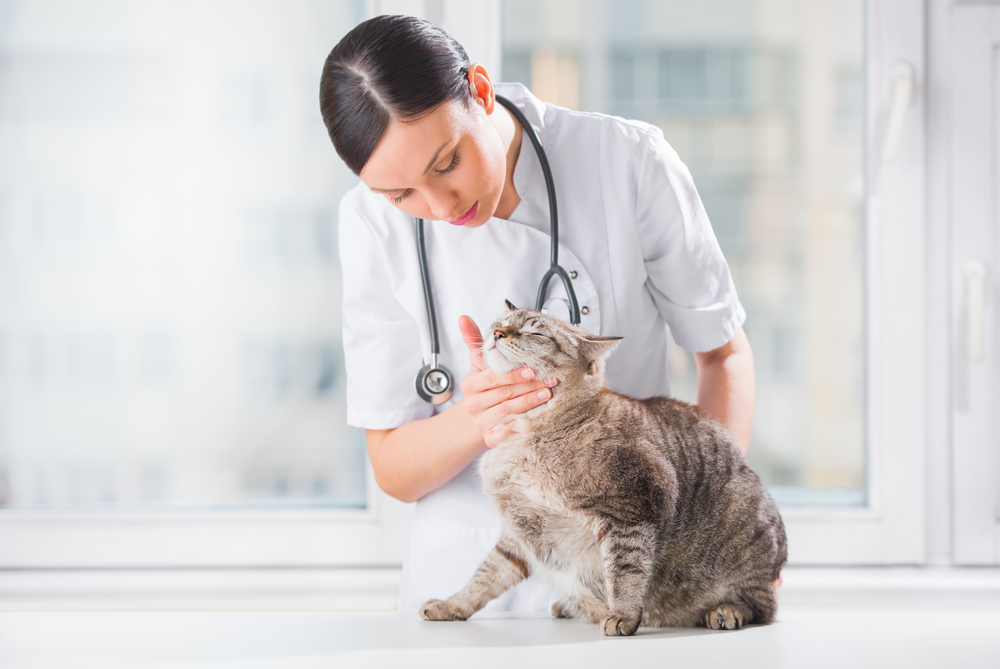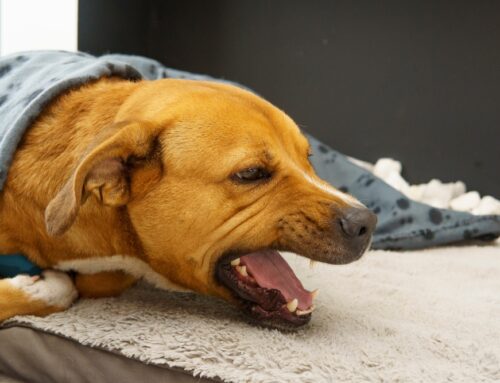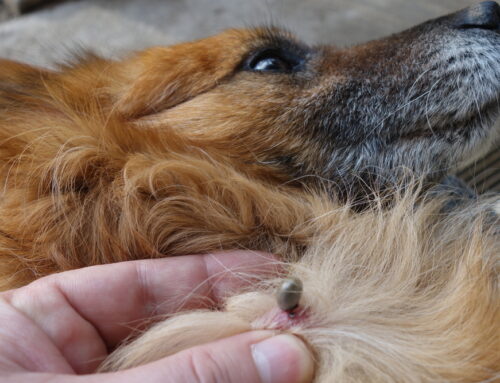When you start sneezing and feeling congested, you know you have a cold coming on, so you hunker down with tissues and soup. When your cat sneezes, refuses to eat, and develops a fever, you likely wonder whether your feline friend has caught a cold. Read our Oliver Animal Hospital team’s guide to learn about feline respiratory infections, and how you can help your cat recuperate.
What are feline respiratory infection signs?
Differentiating among the various feline respiratory infections can be a challenge, as they all cause similar signs. Cats’ common respiratory illness signs include:
- Sneezing
- Coughing
- Nasal discharge
- Ocular discharge
- Conjunctivitis
- Lethargy
- Oral ulcers
- Inappetence
- Fever
What are the most common feline respiratory infections?
Numerous pathogens can cause feline respiratory illnesses. However, the two viruses thought to be responsible for more than 90% of upper respiratory infections (URIs) in cats are:
- Feline viral rhinotracheitis (FVR) — FVR (i.e., feline herpesvirus type 1) tends to cause more serious illness than other URIs. FVR is responsible for more severe ocular discharge and conjunctivitis, with the potential for corneal ulcer development. This virus can also lead to coughing, tracheal inflammation, and severe pharyngitis, triggering anorexia.
- Feline calicivirus (FCV) — Often milder than an FVR infection, FCV typically presents with less severe ocular issues. However, FCV commonly causes oral ulcers that usually appear on the tongue, but may also pop up on a cat’s lips and palate. FCV can also cause young kittens to develop severe viral pneumonia.
In addition to viruses, some bacteria can cause feline respiratory infections. These organisms include:
- Bordetella bronchiseptica — Often the cause of canine kennel cough, B. bronchiseptica can also be spread to cats. Infection typically results in mild sneezing, coughing, fever, and nasal and ocular discharge, although young kittens can develop life-threatening pneumonia. This pathogen is most often found in feral cat colonies.
- Chlamydophila felis — This species-specific bacterium primarily causes cats to develop eye infections and conjunctivitis, and is thought to be responsible for up to 30% of chronic conjunctivitis cases. C. felis is transmitted through direct contact with an infected cat, so disease is more common where large groups of cats are housed together.

How are feline respiratory infections transmitted?
Your cat can contract a respiratory infection through various circumstances. The viruses and bacteria associated with feline respiratory infections spread in three ways:
- Direct contact with an infected cat who is actively showing respiratory infection clinical signs
- Direct contact with a carrier cat shedding the pathogen
- Contact with contaminated objects, such as clothing, bedding, food bowls, and litter boxes
What cats are most at risk for contracting respiratory infections?
Any cat can contract a respiratory infection. However, certain factors can increase their risk, including:
- Living in a large group, such as an animal shelter or a feral cat colony
- Lapse in regular booster vaccination administration or unvaccinated
- Age, such as very young or very old
- Immunosuppression because of concurrent disease (e.g., feline leukemia virus [FeLV], feline immunodeficiency virus [FIV])
How are feline respiratory infections diagnosed?
Your veterinarian can diagnose feline respiratory infection from physical exam findings and the exclusion of other causes. If FVR or FCV is indicated, your veterinarian can likely begin treatment, because knowing the exact pathogen involved is often unnecessary.
How are feline respiratory infections treated?
Because viruses cause most feline respiratory infections, treatment is largely supportive until the cat’s immune system fights off the disease. However, secondary bacterial infections and complications, such as a coinfection with FIV or FeLV, can require more intensive treatment.
Although viruses cause most feline respiratory infections, veterinarians frequently administer antibiotics to combat secondary bacterial infections and to help reduce the infection’s damage. Nebulization may be beneficial for cats who have severe nasal congestion, because this treatment enables them to sneeze out mucus easier. In addition, nasal congestion contributes to a cat’s inappetence, as do oral ulcers. Gently warmed canned food can tempt a reluctant cat to eat, but if they refuse, hospitalization and a feeding tube may be necessary. Veterinarians may administer intravenous or subcutaneous fluids to ensure ill cats do not become dehydrated. If oral ulcers are severe enough, pain medication is also essential. Overall, nursing care to keep the cat warm, comfortable, fed, and hydrated is the goal, ensuring their body is strong enough to fight off the infection.
How can I prevent my cat from contracting respiratory infections?
Most cats who recover from respiratory infections will become carriers, shedding the pathogen in saliva, and oral and nasal secretions. Illness can flare up during stressful times, such as during another illness or an anxiety-inducing situation.
To help prevent your cat from contracting respiratory infections—even if they have had them previously—ensure they are vaccinated regularly against FVR and FCV. While vaccination may not totally prevent infection from occurring, these preventive treatments can greatly minimize an illness’s severity. As always, practice good hygiene to help avoid transmitting disease from one cat to another. If you have multiple household cats, isolate the cat showing signs, and disinfect items, such as clothing and your skin, with which the infected cat has come in contact.
If your cat’s protection against respiratory infections has lapsed, see your south Austin veterinarian as soon as possible. To schedule your cat’s vaccination appointment, contact our Oliver Animal Hospital team.







Leave A Comment